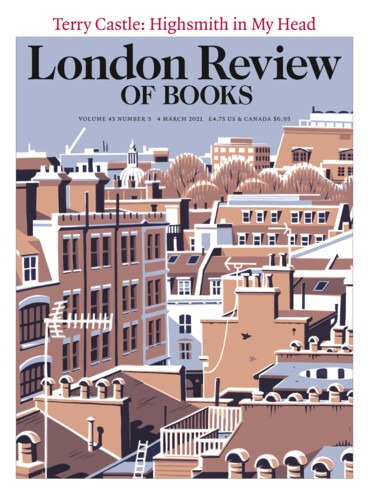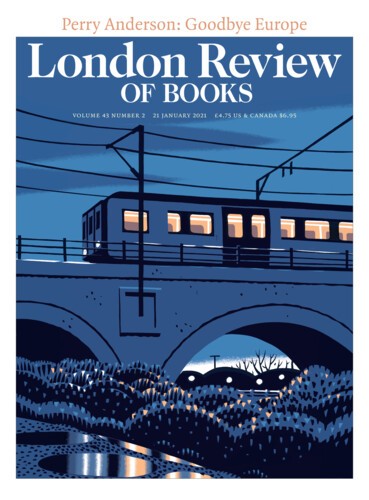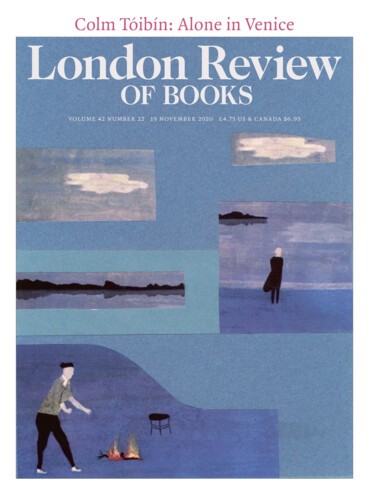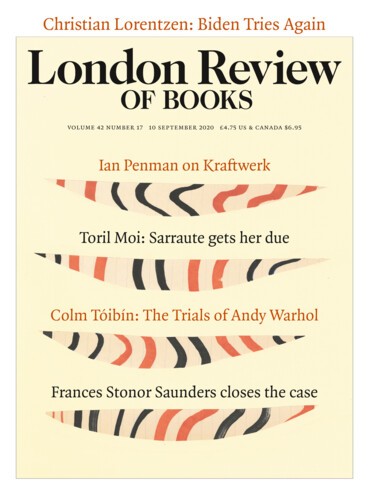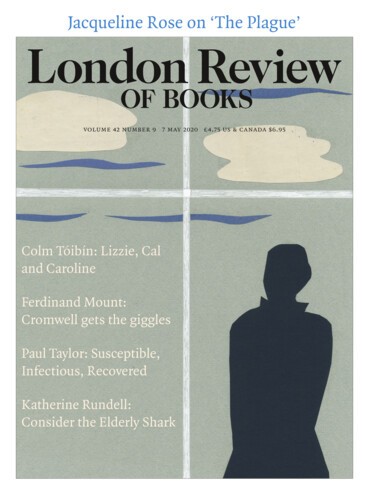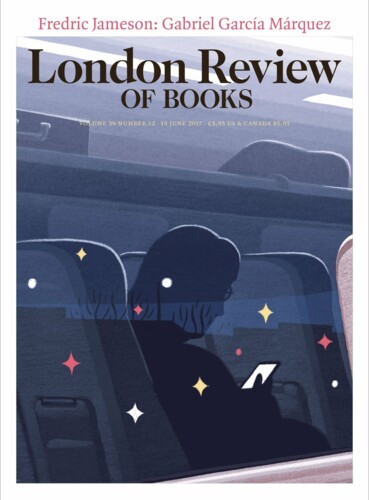Open in a Scream
Colm Tóibín, 4 March 2021
Since Bacon was known for his tangled personal life, his gambling, his drinking and the chaos of his studio, with the stories of his sexual habits and ghastly Irish childhood in circulation, something needed to be done to explain that his paintings were not just garish expressions of his own neuroses. David Sylvester and Michel Leiris, who both wrote perceptively about his work, emerged as friends and champions. As early as 1951, Sylvester asserted that Bacon was ‘the major English artist of his time’. He soon had access to Bacon’s studio and saw paintings before anyone else did. Sylvester was practised at making eloquent, high-toned, oracular statements and, spurred on by John Berger’s contrary judgments, applied this skill to Bacon: ‘In these claustrophobic curtained settings, there loom up before us beings whose shadowy, ambiguous, unexpected presence takes command of any setting they survey, making real beings seem like shadows. They are as appalling as they are compelling, for these are creatures faced with their tragic destiny.’
